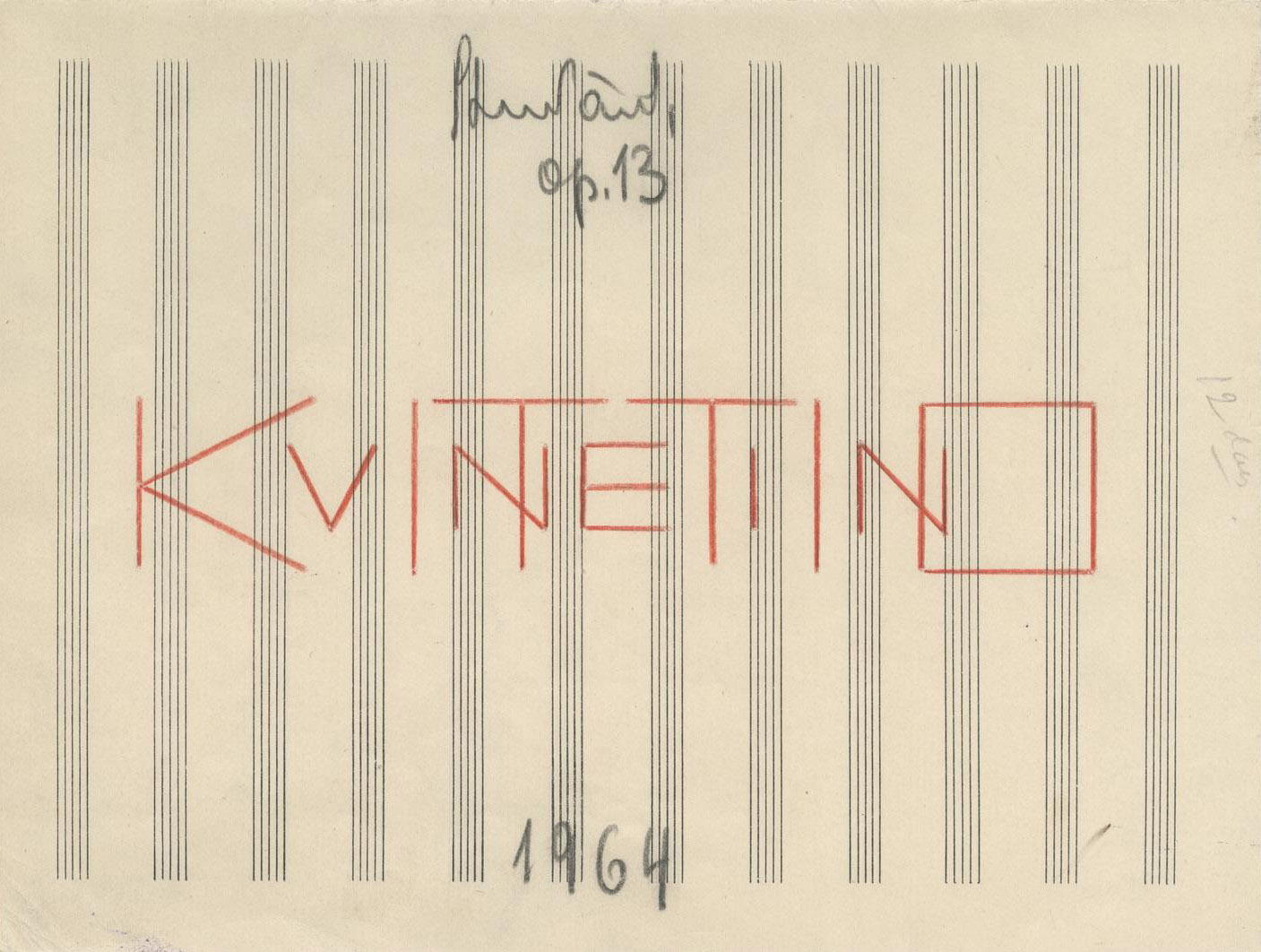The Quintettino or “small quintet” was composed in the summer of 1964 and is dedicated to the ESSR State Philharmonic Wind Quintet. It was premiered in September 1964 at a meeting of Armenian and Estonian composers in Yerevan. In creating the quintet, Pärt has followed the example of a classical wind quintet, which is referred to by its traditional composition, a three-part form with opposite characters and a clear texture. The work is based on a dodecaphonic row, and although the musical material is born of 12 chromatic sounds, the Quintettino also features tonal elements.
The first movement is introduced by chords, acting as an opening signal, on G major triad notes. Then two opposite processes start: in the first, the clusters sounding in piano move from twelve rep…
The Quintettino or “small quintet” was composed in the summer of 1964 and is dedicated to the ESSR State Philharmonic Wind Quintet. It was premiered in September 1964 at a meeting of Armenian and Estonian composers in Yerevan. In creating the quintet, Pärt has followed the example of a classical wind quintet, which is referred to by its traditional composition, a three-part form with opposite characters and a clear texture. The work is based on a dodecaphonic row, and although the musical material is born of 12 chromatic sounds, the Quintettino also features tonal elements.
The first movement is introduced by chords, acting as an opening signal, on G major triad notes. Then two opposite processes start: in the first, the clusters sounding in piano move from twelve repetitions towards one, and in the second, the clusters in forte move from one pulse to twelve. Thus, the music of the active first movement consists of performing two opposite processes which, is followed by clusters in fortissimo.
The main mood of the contemplative middle part is created by descending four-tone chains, the frozen mood of which is contrasted by the chromatic melody of the French horn based on the B-A-C-H motif. After the development of the horn part comes the culmination of the second movement, where at the point of the golden section in the 11th bar the four-tone figure begins to move in the opposite direction. An improvisational flute cadence is initiated at the peak height of the tense movement. This is followed by a B-A-C-H motif flowing into piano pianissimo, surrendering to the general mood of this part.
In the energetic third movement, the captivating rhythmic and sonic energy is released as a result of the simultaneous sounding of independent layers. Against the background of the horn ostinato, wood instruments enter one after the other, starting from the lower and finishing with the higher-sounding ones. Each instrument has a definite rhythmic duration, organized from the lowest texture layer – from the quarter notes of the bassoon – to the highest, chirpy triols of the flute. The simultaneous sounding of different kinetic energies creates tension that finds some release in the forte chords. As in the third movement, the horn has a different function to the wood instruments. Shadowed by the unwavering chords of the culmination, there is a driving melody in the horn part, which leads towards a humorous and ambivalent ending cadence.
